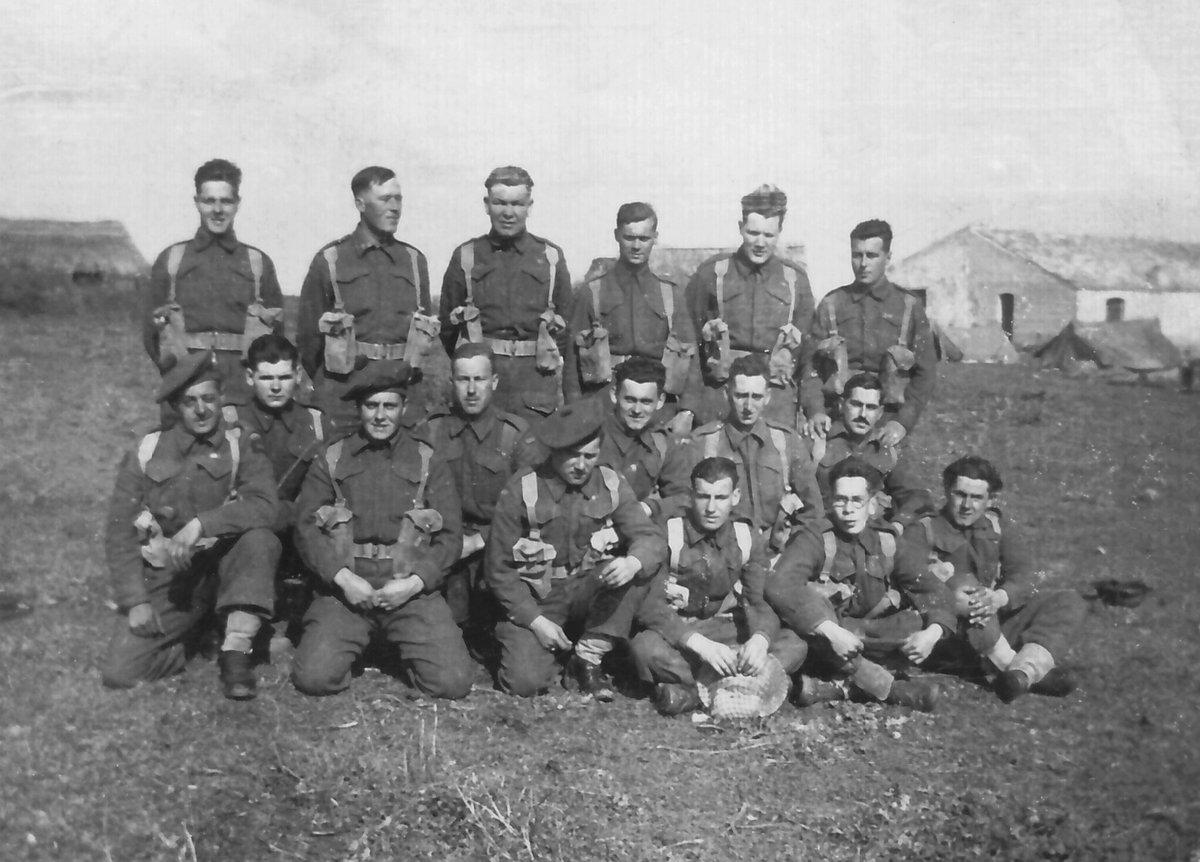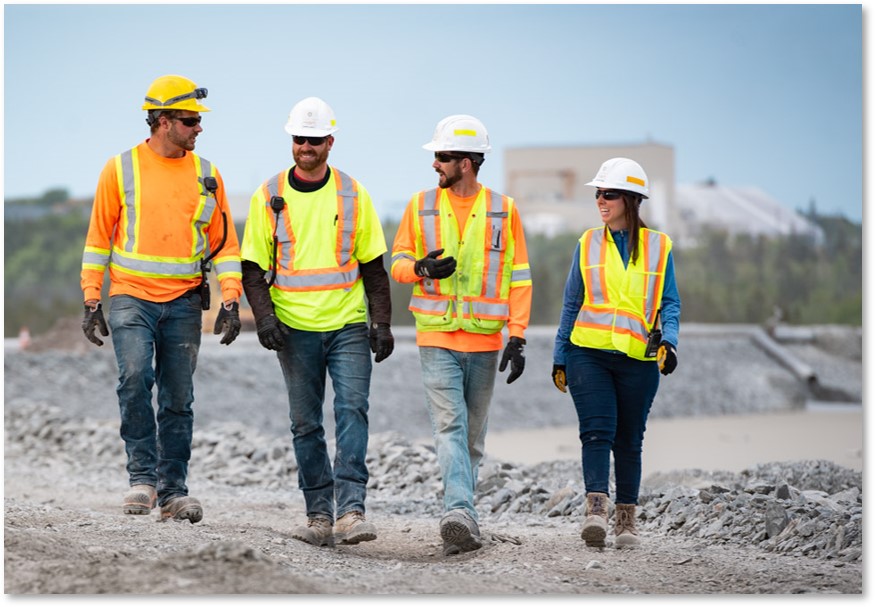In #WWII, #coal was central to the war effort. It not only kept people warm but powered industry, railways and shipping. The war couldn’t be fought with it and it was essential to the #Canadian economy.
#nspoli #cbpoli #novascotia #capebreton #cb #ns #nshistory #mining

#nspoli #cbpoli #novascotia #capebreton #cb #ns #nshistory #mining


Yet Nova Scotia #coal production declined from a wartime high of nearly 7.4 million tons in 1941 to 5.1 million tons in 1945.
#nspoli #cbpoli #novascotia #capebreton #cb #ns #nshistory #mining
#nspoli #cbpoli #novascotia #capebreton #cb #ns #nshistory #mining

In the Dominion Coal Company mines, which accounted for close to 60% of the province’s coal production, output fell from 4.3 million tons in 1941 to less than 3 million tons in 1945.
#nspoli #cbpoli #novascotia #capebreton #cb #ns #nshistory #mining
#nspoli #cbpoli #novascotia #capebreton #cb #ns #nshistory #mining

Declining #coal production in Nova Scotia forced Ontario and Quebec to become almost wholly dependent on US coal during #WWII – US coal imports nearly doubled between 1939-1945.
#nspoli #cbpoli #novascotia #capebreton #cb #ns #nshistory #mining
#nspoli #cbpoli #novascotia #capebreton #cb #ns #nshistory #mining

If #coal was so important, and #NovaScotia had so much of it, why did our production drop instead of increasing?
The main problem was a lack of skilled labour. More than 1,500 skilled coal miners from Nova Scotia entered the military between 1939 and 1945.
#nspoli #cbpoli
The main problem was a lack of skilled labour. More than 1,500 skilled coal miners from Nova Scotia entered the military between 1939 and 1945.
#nspoli #cbpoli

The Government of #Canada tried to address the #WWII #coal production problem various ways. It declared coal mining an essential service in 1941. It provided wage subsidies and tax concessions to miners. It ran an ad campaign promoting coal’s importance.
#nspoli #cbpoli
#nspoli #cbpoli

It offered training courses. It allowed coal miners to defer military service and to leave the military to return to the mines.
None of these well-intentioned policies helped.
#nspoli #cbpoli #novascotia #capebreton #cb #ns #nshistory #mining
None of these well-intentioned policies helped.
#nspoli #cbpoli #novascotia #capebreton #cb #ns #nshistory #mining

For example, giving raises to everyone at the mines unintentionally discouraged certified miners from working at the coal face and doing actual mining – they could earn as much working in other areas of the mine that were easier and safer.
#nspoli #cbpoli #novascotia #capebreton
#nspoli #cbpoli #novascotia #capebreton

As a result, between 1940 and 1944, #coal face workers declined by almost 29% while the number of other underground workers increased by more than 8%.
#nspoli #cbpoli #novascotia #capebreton #cb #ns #nshistory #mining
#nspoli #cbpoli #novascotia #capebreton #cb #ns #nshistory #mining

Also, by April 1943, 500 army men had volunteered to return to Nova Scotia’s mines but only 59 had actually been released. The policy of letting military men return to the mines wasn’t being implemented properly.
#nspoli #cbpoli #novascotia #capebreton #cb #ns #nshistory #mining
#nspoli #cbpoli #novascotia #capebreton #cb #ns #nshistory #mining

Absenteeism was also a major problem during the war. By June 1945, absenteeism had reached a daily average of 30% in the #NovaScotia #coal industry — a rate federal officials saw as a "deliberate and calculated" attempt to produce more overtime work and thus higher pay.
#nspoli
#nspoli

The mining companies, governments, miners and unions all bear blame for the situation.
#nspoli #cbpoli #novascotia #capebreton #cb #ns #nshistory #mining
#nspoli #cbpoli #novascotia #capebreton #cb #ns #nshistory #mining

The British Empire Steel Corporation (Besco) and its successor, the Dominion Steel and Coal Corporation (Dosco), tried to lower wages and limit miners’ ability to strike during the 1920s and 1930s.
#nspoli #cbpoli #novascotia #capebreton #cb #ns #nshistory #mining
#nspoli #cbpoli #novascotia #capebreton #cb #ns #nshistory #mining

It also provided terrible working and living conditions for many miners and their families.
The federal and Nova Scotia governments did little to help establish labour peace.
#nspoli #cbpoli #novascotia #capebreton #cb #ns #nshistory #mining
The federal and Nova Scotia governments did little to help establish labour peace.
#nspoli #cbpoli #novascotia #capebreton #cb #ns #nshistory #mining

In fact, in every strike in the 1920s and 30s, the governments intervened on the side of the coal companies, sometimes even using militia and police to suppress coal disturbances.
#nspoli #cbpoli #novascotia #capebreton #cb #ns #nshistory #mining
#nspoli #cbpoli #novascotia #capebreton #cb #ns #nshistory #mining

The miners themselves were quite militant – with some justification. There were strikes in 1922, 1923 and a two-month strike in 1924 crippled coal production in Nova Scotia.
#nspoli #cbpoli #novascotia #capebreton #cb #ns #nshistory #mining
#nspoli #cbpoli #novascotia #capebreton #cb #ns #nshistory #mining

A five-month strike in 1925 featured widespread violence and property damage but ended with a pay cut for the miners.
Tensions continued through the 1930s and led to a total of 39 strikes in 1939 and 55 in 1940, many of them illegal.
#nspoli #cbpoli #novascotia #capebreton #cb
Tensions continued through the 1930s and led to a total of 39 strikes in 1939 and 55 in 1940, many of them illegal.
#nspoli #cbpoli #novascotia #capebreton #cb

The most remarkable stoppage in production occurred when miners in #GlaceBay went on strike in support of a group of waitresses at the Glory Cafe who had been fired and were being denied their pay until they returned their uniforms.
#nspoli #cbpoli #novascotia #capebreton #cb #ns
#nspoli #cbpoli #novascotia #capebreton #cb #ns

Local unions determined that cafe owner Yee Yen was "in league with other cafe owners in a move to smash the waitresses’ union.” This made full union support of the waitresses mandatory. Two days were lost in the mines as a result of this job action.
#nspoli #cbpoli #novascotia
#nspoli #cbpoli #novascotia

Fortunately, today’s mining industry is very different. It is the highest-paying resource industry in Nova Scotia with average wages of over $55,000 per year – on par with NS’ financial services sector.
#nspoli #cbpoli #novascotia #capebreton #cb #ns #nshistory #mining
#nspoli #cbpoli #novascotia #capebreton #cb #ns #nshistory #mining

An entry-level job like haul truck driver pays an average of $25 per hour.
Nova Scotia’s mining/quarrying industry has reduced its injury rate by 90% in the past two decades and is one of the safer industries in NS today.
#nspoli #cbpoli #novascotia #capebreton #cb #ns #nshistory
Nova Scotia’s mining/quarrying industry has reduced its injury rate by 90% in the past two decades and is one of the safer industries in NS today.
#nspoli #cbpoli #novascotia #capebreton #cb #ns #nshistory

More details on Nova Scotia’s coal mining challenges during WWII can be found in this federal government paper: journals.lib.unb.ca…/acad…/article/view/10783/11553
#nspoli #cbpoli #novascotia #capebreton #cb #ns #nshistory #mining

#nspoli #cbpoli #novascotia #capebreton #cb #ns #nshistory #mining


• • •
Missing some Tweet in this thread? You can try to
force a refresh



























